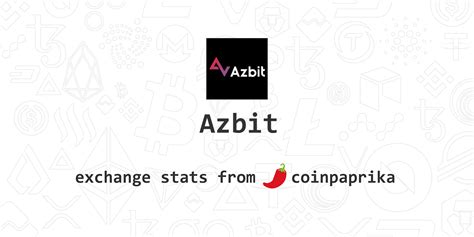Learn how to succeed in crypto trading with the right mentor. Set clear goals, develop a strategy, and manage risks effectively for profitable results.
Choosing the Right Mentor
Contents
Crypto Trading Mentor
When it comes to embarking on a journey into the world of crypto trading, finding the right mentor can be a crucial factor in determining your success. With countless self-proclaimed experts and gurus in the field, it can be overwhelming to sift through the noise and identify someone who truly has the knowledge and experience to guide you effectively.
One of the first steps in selecting a mentor is to define your goals and what you hope to achieve through their guidance. Are you looking to master day trading techniques, or do you want to develop a long-term investment strategy? Understanding your own objectives will help you narrow down potential mentors who specialize in the areas that align with your aspirations.
Additionally, it’s important to research the background and track record of any potential mentors. Look for individuals who have a proven history of success in the crypto market, and who are transparent about their trading performance. This can be in the form of verifiable trading results, testimonials from previous mentees, or a strong presence in the trading community.
Another crucial aspect to consider is the compatibility of trading styles between you and your prospective mentor. Every trader has their own unique approach and risk tolerance, so it’s important to find someone whose methods resonate with your own. Whether you prefer a conservative, methodical approach or a more aggressive, high-risk strategy, finding a mentor who aligns with your style can be key to a successful mentorship.
Once you’ve narrowed down your options, consider reaching out for a trial period to gauge the mentor’s teaching style and the compatibility of your working relationship. This can be in the form of a consultation or a short-term mentorship agreement, allowing you to get a sense of their communication, support, and the value they can bring to your trading journey.
- Define your goals and objectives
- Research the background and track record of potential mentors
- Consider compatibility of trading styles
- Engage in a trial period to assess mentorship fit
| Mentorship Criteria | Importance |
|---|---|
| Track record and experience | High |
| Alignment of trading styles | Medium |
| Communication and support | High |
| Teaching methodology | Medium |
Setting Clear Trading Goals
When it comes to crypto trading, setting clear and achievable trading goals is essential for success. Without clear goals, traders may find themselves aimlessly navigating the volatile crypto market, leading to poor decision-making and missed opportunities. By establishing specific, measurable, achievable, relevant, and time-bound (SMART) goals, traders can create a roadmap for their trading journey and stay focused on what they want to achieve.
One method for setting clear trading goals is to start by determining the desired outcome. Whether the goal is to generate a certain percentage of profit each month, build a diversified portfolio, or simply minimize losses, having a clear vision of what needs to be accomplished is crucial. From there, traders can break down their long-term goals into smaller, achievable milestones to track progress and stay motivated.
In addition to setting specific trading goals, it is equally important to prioritize them. Traders should identify which goals are the most important and focus on those first. This may involve allocating resources, such as time and capital, accordingly to ensure that the most critical objectives are being pursued with diligence and dedication.
Furthermore, regularly evaluating and adjusting trading goals is essential for staying on track and adapting to changing market conditions. The cryptocurrency market is known for its rapid price movements and evolving trends, so traders must be flexible and willing to modify their goals as needed. By regularly reviewing and refining their trading goals, traders can ensure that they remain relevant and achievable in the dynamic crypto landscape.
Developing a Trading Strategy
When it comes to crypto trading, having a well-defined trading strategy is crucial for success. A trading strategy outlines the rules and conditions for entering and exiting trades, managing risk, and maximizing profits. It acts as a roadmap to guide your trading decisions and keep emotions in check. Without a solid trading strategy, traders are likely to fall victim to impulsive and emotional decision-making, leading to poor trading results.
One effective way of developing a trading strategy is to conduct thorough research and analysis of the crypto markets. This involves studying historical price data, identifying patterns and trends, and understanding market fundamentals. By gaining a deep understanding of market movements, traders can develop a trading strategy that is based on data and evidence, rather than intuition or guesswork.
Another important aspect of developing a trading strategy is to clearly define risk management rules. This includes determining the maximum amount of capital to risk on each trade, setting stop-loss orders, and using position sizing techniques to limit potential losses. By incorporating risk management principles into a trading strategy, traders can protect their capital and minimize the impact of losing trades.
It’s also essential to regularly review and refine the trading strategy based on performance and market conditions. Markets are constantly evolving, and what works in one market environment may not work in another. Therefore, it’s important to continuously evaluate the effectiveness of the trading strategy and make necessary adjustments to adapt to changing market dynamics.
| Key Steps for Developing a Trading Strategy |
|---|
| 1. Conduct thorough market research and analysis |
| 2. Clearly define risk management rules |
| 3. Regularly review and refine the trading strategy |
Learning Risk Management Techniques
When it comes to crypto trading, one of the most important skills to learn is risk management. This involves the ability to assess and mitigate potential risks associated with trading in the volatile world of cryptocurrency. A crucial aspect of risk management is understanding that every trade carries a level of risk, and it’s essential to have a strategy in place to protect your investment.
One of the key risk management techniques in crypto trading is setting a stop-loss order. This is an order placed with a broker to buy or sell once the stock or cryptocurrency reaches a certain price. By setting a stop-loss order, you can limit potential losses and protect your investment in the event of a sudden market downturn.
Another important risk management technique is diversifying your portfolio. This involves spreading your investment across different assets to reduce the impact of potential losses from any single investment. Diversification can help manage risk and improve overall returns in the long run.
Additionally, it’s crucial to stay informed about market trends and developments in the cryptocurrency space. Keeping up-to-date with news and industry updates can help you make more informed decisions and reduce the potential for unexpected market events to adversely affect your portfolio.
In conclusion, learning effective risk management techniques is essential for success in crypto trading. By understanding and implementing techniques such as setting stop-loss orders, diversifying your portfolio, and staying informed about market trends, you can minimize potential risks and protect your investment in the volatile world of cryptocurrency trading.
Evaluating Mentorship Results
After spending an extensive amount of time working with a crypto trading mentor, it’s important to take the time to evaluate the results of the mentorship. One way to do this is by assessing the progress made in achieving your trading goals. Evaluating mentorship results can also involve analyzing the impact of the mentor’s guidance on your overall trading strategy and risk management techniques. It is essential to reflect on whether the mentorship has helped you develop a clearer understanding of the crypto market and how to navigate it effectively.
One method of evaluating mentorship results is by documenting the specific skills and knowledge gained through the mentorship. This can be done through listing the new concepts learned, successful trading strategies implemented, and any notable improvements in risk management techniques. By breaking down the mentorship experience into tangible achievements or areas of growth, you can gain a clearer picture of the impact the mentor has had on your trading journey.
Another aspect to consider when evaluating mentorship results is the overall return on investment (ROI) of the mentorship. This involves assessing whether the knowledge and guidance provided by the mentor has resulted in tangible financial gains or positive changes in your trading performance. By comparing your trading results before and after the mentorship, you can gauge the effectiveness of the mentor’s influence on your trading outcomes.
Additionally, it is important to seek feedback from other mentees or individuals who have worked with the same mentor. Engaging in discussions with peers who have undergone similar mentorship experiences can provide valuable insights into the mentor’s effectiveness and the impact of their guidance. This external perspective can further contribute to the evaluation of mentorship results and help validate the overall quality of the mentor’s support.












